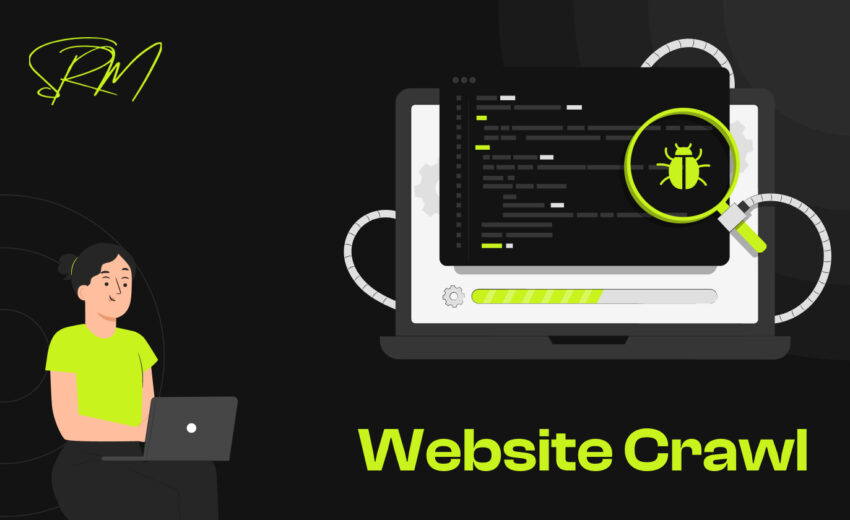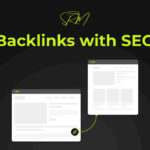
When it comes to boosting your website’s visibility, understanding how a website crawl works is key. A website crawl is the process where search engines like Google send bots to explore and read your website’s content. This helps them understand what your pages are about and decide where they should appear in search results. A well-organized website that’s easy for these bots to navigate can improve your SEO, helping you rank higher and reach more people. By ensuring your site is easily crawlable, you can make sure your best content gets noticed, driving more traffic and improving your online presence.
How Search Engines Perform Website Crawls
Search engines use crawlers or bots to explore and understand your website, which is how your content gets ranked in search results. These bots follow the links on your site, checking the structure and quality of each page. How often and how deeply a search engine crawls your site depends on factors like the authority of your site, how often you update your content, and how well your site is structured. If your website is updated frequently or has a lot of backlinks, crawlers will visit more often, ensuring that your new content gets noticed. The depth of the crawl refers to how far the bots go into your site, checking both main and deeper internal pages. This process of crawling in SEO is essential for ensuring your site is fully indexed and optimized for higher rankings.
- Role of Crawlers and Bots: Crawlers explore your site’s links to gather and index important content.
- Crawl Frequency: The more authority and fresh content your site has, the more often it will be crawled.
- Crawl Depth: Crawlers check both surface-level and deeper pages on your site.
Note: According to research from Backlinko, Google’s bots typically crawl a website every 4 to 6 days on average, depending on how fresh and authoritative the site is.
Key Factors That Influence Website Crawl Efficiency
The efficiency of a website crawl depends on a few key factors that help search engines easily explore and index your site. By optimizing these areas, you can make your site more accessible to crawlers and improve the overall user experience.
- Website Structure and Navigation: A well-organized website with clear navigation makes it easier for crawlers to find important pages. In fact, studies show that sites with a clear structure see a 50% increase in user engagement.
- Internal Linking Strategies: Good internal linking helps crawlers discover more of your content and understand how your pages are connected. Websites with strong internal links experience up to 40% better crawl efficiency.
- Page Load Speed and Mobile Friendliness: A fast-loading, mobile-friendly website enhances both crawl efficiency and user satisfaction. Google found that 53% of mobile users leave a site if it takes more than 3 seconds to load.
Common Website Crawl Issues Affecting Rankings
Common crawling issues can hurt your rankings, making it harder for search engines to properly index your content. Fixing these issues is essential for better SEO performance and user experience.
- Broken Links and 404 Errors: When links lead to pages that don’t exist, it creates a bad experience for both users and crawlers. For example, if a product page links to a non-existent page, crawlers won’t be able to find it, which can impact your SEO.
- Duplicate Content: Having identical content on multiple pages can confuse search engines and lower your rankings. For example, if several product pages have the same descriptions, search engines won’t know which one to prioritize, affecting your SEO.
- Poor XML Sitemap and Robots.txt Configuration: If your XML sitemap is incorrect or your robots.txt file blocks important pages, crawlers may miss key content. For instance, if you accidentally block your blog pages from being crawled, they won’t appear in search results.
How Website Crawl Directly Impacts Search Engine Rankings
How search engines perform a website crawl directly affects your rankings. When search engines crawl your site, they index your content and assess its relevance and quality. If your website is easy to crawl with clear navigation, fast load times, and no broken links, it’s more likely to rank higher. However, if there are issues like slow pages or hard-to-find content, search engines may miss important pages, causing your rankings to drop. Optimizing how your site is crawled is key to improving your visibility and driving more traffic. For the best results, consider seeking expert SEO services to ensure your site is fully optimized.
Note: Studies show that 53% of mobile users will leave a site if it takes more than 3 seconds to load. Also, sites with better navigation see 50% higher user engagement, proving that a smooth crawling process helps both your rankings and user experience. To ensure your site is optimized for these factors, working with a Digital Marketing Agency can provide expert guidance and improve your site’s performance.
Best Practices to Optimize Website Crawl for SEO
To help search engines easily explore and index your website, there are a few simple best practices you should follow. These steps can improve your SEO and make sure your content is found and ranked higher.
- Submitting XML Sitemaps to Search Engines: An XML sitemap helps search engines discover all your important pages. Make sure to submit it to Google Search Console so crawlers can index your content more quickly.
Expert Tip: Keep your sitemap updated whenever you add new pages to ensure crawlers have the latest information. - Fixing Crawl Errors in Google Search Console: Regularly check for crawl errors in Google Search Console, like broken links or missing pages. Fixing these problems ensures that search engines can access your entire site.
Expert Tip: Set up email alerts in Google Search Console so you’re immediately notified about any issues. - Enhancing Website Speed and Mobile Optimization: A fast, mobile-friendly website ensures crawlers can easily explore your pages and improves the overall user experience.
Expert Tip: Use Google PageSpeed Insights to check your site’s speed and focus on improving load times, especially for mobile users.
Tools to Analyze and Improve Website Crawl
To make sure search engines can easily explore and index your website, using the right tools is key. These tools help you identify and fix issues that might be holding back your site’s performance.
- Google Search Console: This free tool from Google gives you valuable insights into how search engines view your site, showing crawl errors and indexing status. It’s essential for finding and fixing issues.
Important Feature: The Crawl Errors report, which helps you spot problems search engines face when trying to access your site. - Screaming Frog SEO Spider: This tool crawls your site and checks for SEO issues like broken links and duplicate content. It’s great for a detailed site audit and improving crawlability.
Important Feature: The ability to crawl large websites and create in-depth SEO reports. - SEMrush and Ahrefs: Both tools offer complete site audits that help you find crawl issues, broken links, and other technical problems that could stop search engines from indexing your content.
Important Feature: Detailed site audits that help you identify crawl issues and offer suggestions to make your site more search-engine-friendly
Final Thoughts
In sum-up, making sure your website crawl process is optimized is crucial for long-term SEO growth. When search engines can easily explore and index your site, it increases your chances of ranking higher and getting more organic traffic. This not only boosts visibility but also improves user engagement and helps drive conversions. By focusing on crawl optimization now, you’re setting your site up for ongoing SEO success and benefits for the future. If you’re unsure about the best approach, consulting an SEO expert can help ensure you’re on the right track for maximum performance.
Want better rankings? Start optimizing your crawl today!



